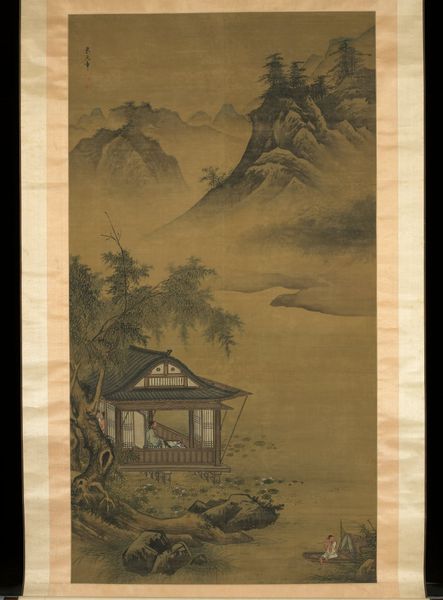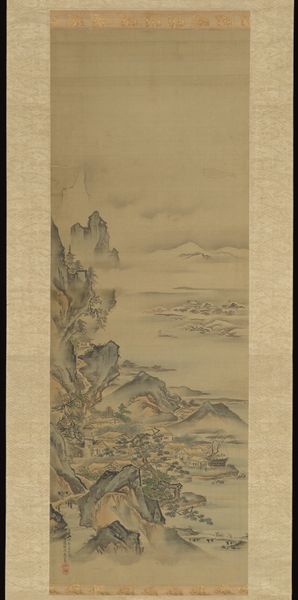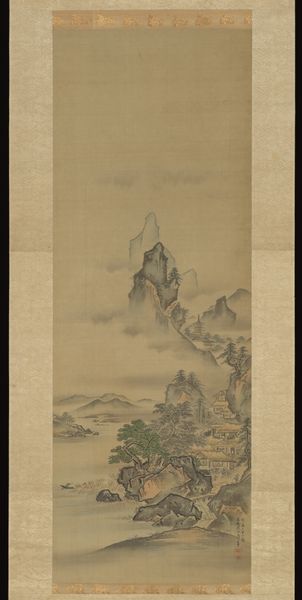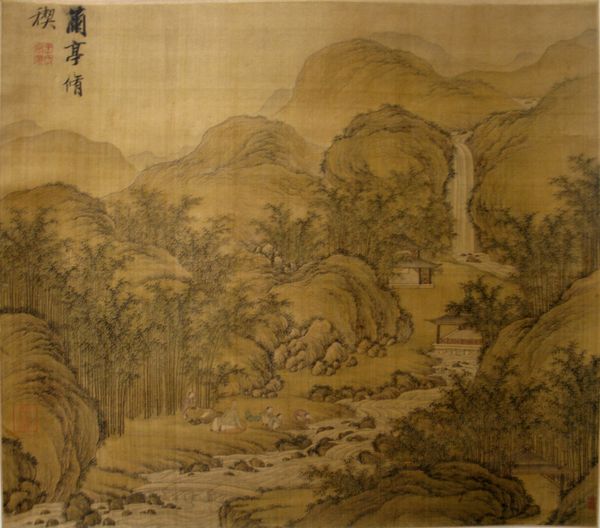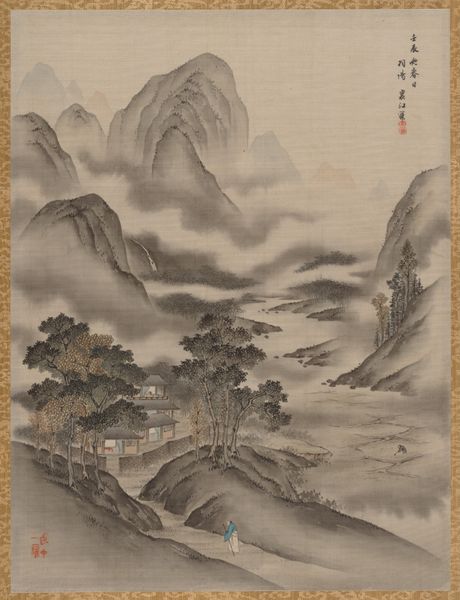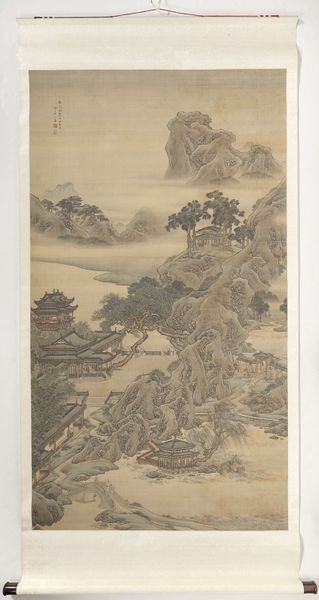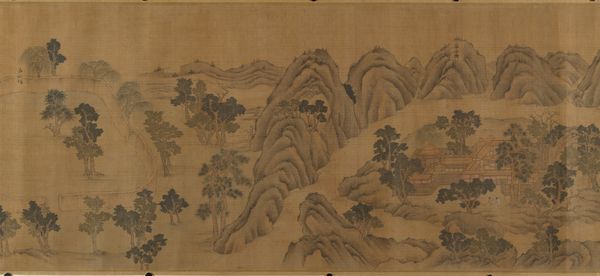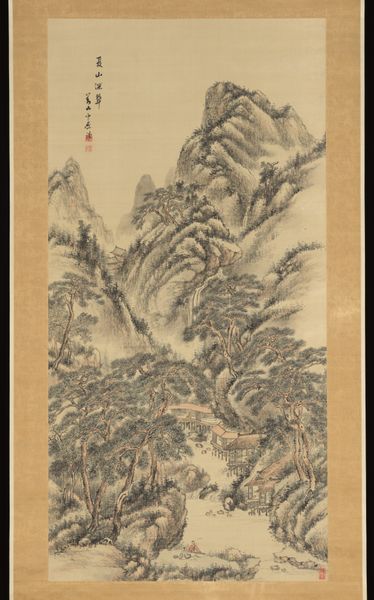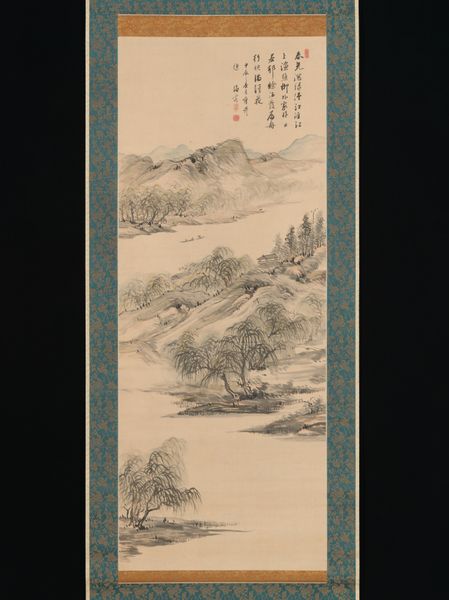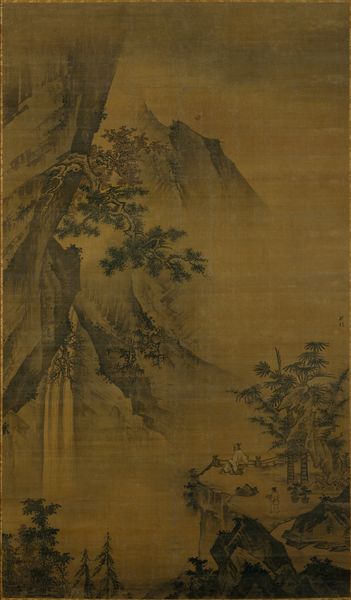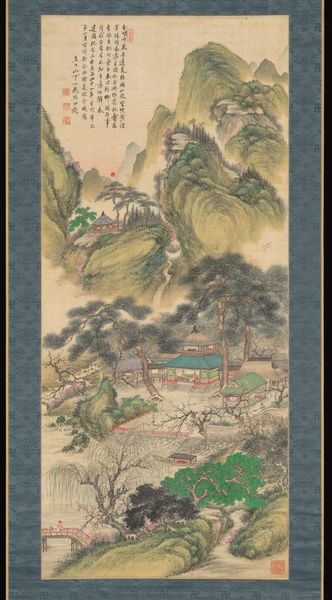
painting, ink
#
ink painting
#
painting
#
asian-art
#
landscape
#
ink
Dimensions: 73 1/4 × 39 1/2 in. (186.1 × 100.3 cm) (image)130 3/4 × 50 7/8 in. (332.1 × 129.2 cm) (mount, with roller)
Copyright: Public Domain
Editor: So, this is "Landscape with Summer Villa" by Yuan Jiang, dating from around 1730. It's an ink painting, and I’m really struck by its calmness. It feels so…peaceful. What do you see in this piece? Curator: It’s interesting you say “peaceful.” I find myself wondering if “longing” might be a better word. Yuan Jiang wasn’t just painting a pretty scene; he was crafting a dream. Notice how the ink washes create this sense of hazy distance, blurring the line between reality and the ideal of what a cultivated life could be. Do you feel it pulls you in? Editor: Definitely, especially that villa nestled into the landscape. It seems almost utopian, like a perfect escape. But I'm curious about the scale. How does it influence our reading of the painting? Curator: Ah, scale! You’ve hit on something essential. It’s not just a landscape; it's a world. Look at how tiny the people are compared to the mountains and buildings. It shrinks human concerns, elevates nature and architecture as emblems of timelessness. It’s as if Yuan Jiang is asking us, ‘Where do you find your center in this grand scheme?’ A little intimidating, maybe? Editor: I see what you mean! That adds another layer to it, making me question my own place within it all. It's not just a pretty view, it's philosophical! Curator: Precisely! It makes me wonder if we can truly find peace if we do not consider ourselves a small component of an immense world. Editor: That's something to consider. Thanks; I’ll definitely look at landscapes differently from now on! Curator: My pleasure! Art’s true magic is in changing how we see.
Comments
minneapolisinstituteofart almost 2 years ago
⋮
The first emperor of the Qin dynasty (221–207 BCE) has escaped the summer heat at his palace in Mount Li in Xi’an, the capital of the Qin. The painting is dominated by the atmospheric mountain, but look closely to see the emperor sitting in his palace surrounded by a large number of female courtesans. The realistic portrayal of these figures allows for a glimpse into the lives of these women. They are depicted making tea, providing refreshment and entertainment; we can see their clothing, utensils, and hairstyles. And while they are scattered throughout the palace in various chambers, they all seem to have the purpose of serving the emperor.
Join the conversation
Join millions of artists and users on Artera today and experience the ultimate creative platform.
